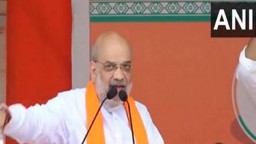Latest News
A lot more desired

In ancient Indian culture, women were treated equal to men, and there was no discrimination on the basis of gender, rather women were honoured by society. They used to enjoy full basic rights and got to live equal life just like men. Women in Indian history have gone through two things in their life one is subjection and second is deliverance. The ultimate goal of empowerment of women based on Mahatma Gandhi’s vision is Sarvodaya- the welfare of all through cooperation and trusteeship in the economic sphere, equal participation in the political sphere, and mutual aid in the social sphere without regard to caste, or class or gender.
As the world is preparing to celebrate International Women’s Day on March 8, 2024, it would be prudent to reflect on the progress made by India regarding women’s empowerment. Women’s empowerment has five main components: sense of selfworth; freedom to decide for self; access to opportunities and resources; power to control their own lives, both within and outside the home; and their ability to influence the direction of social change to create a more just social and economic order, nationally and globally.
It’s no secret that Indian women have been living in a patriarchal structure for too long now. Though several women have shown courage to break barriers, it is still a long way to go, as most women still hold back their words even today for fear of being judged and are unsure about how others will react to their words. Ages of conditioning has created an internal fear among women of what society or family would think and how they would react, leading to loss of confidence in self-worth and their personal growth as an individual. The economic empowerment of women is one of the most fundamental components of achieving gender equality and women’s empowerment more broadly. If women participate in the economy identically to men, it would accelerate our journey to becoming a developed nation by 2047.
In our country do the women really have freedom to make choices when it comes to their marriage, education, career, travel or participation in political, social and economic activities freely. Despite explicit rights granted by our constitution on freedom and equality to both men and women, the ground realities are far from satisfactory and a lot more is desired. while the Constitution of India does not recognise the right to marry explicitly, but a number of fundamental rights like the right to life, the right to personal liberty, the right to equality indirectly support the right to marry. However, the number of cases of child marriage, early marriage, forced marriage, or interference with the right to marry makes the laws hollow as implementation is far from what is desired by law.
In the overall literacy rate of India females are almost 15 % behind males. Despite a higher employability rates of female at 53% vs 48% for male, the labour force ratios above 15 years of ages remains a low 33% of female vs 67 % for male. The unpaid care work done by women like bringing up children, looking after old age parents and in- laws, voluntary unpaid work under taken during family, social and religious functions is all unaccounted for when it comes to contribution of women.
The 73rd and 74th constitutional Amendments provide reservation to women in local bodies so as to make them politically empowered and have a say in decision- making at base levels. Implementation of these provisions has empowered women but proxy representation (which is now on decline) by the male family members has undermined the whole process of women empowerment. The poor state of women representation in States and Central legislatures (though this has progressively increased but still hovers around 12 to 14%) is indicative of the fact that we have miles to go before the women get their due.
Over the years central and state governments in India have worked towards issues pertaining to reducing gender inequality, violence against women, improving the sex ratio at birth, health, and education, thanks to decades of women’s activism and the feminist movements. The country has registered significant improvements in closing gender gaps in education specially in primary education and tertiary education enrolment. There have been some signs of positive changes in the status and position of women but there are many challenges, that can only be resolved by synergised efforts of people, governments and NGOs.
While there has been good progress in education and basic health sectors but the financial and personal autonomy eludes most women. The gender gap in asset ownership and lifetime earning remains a major concern where the share of women is below 50%. The former is indiscriminately promoted but it also must be remembered that these are factors that also enhance women’s marriage market prospects. However, within the private realm, rigid gender roles are practised and promoted, and women’s socio-economic autonomy is discouraged and seen with suspicion. To truly empower women and reduce gender inequality, we need to value and invest in girls and women not merely as a means to some end but as an end in themselves.
THE VIEWS EXPRESSED BY THE AUTHOR ARE PERSONAL
Col Rajesh Bhukar The writer is a Post Graduate in International Studies, Alumni of Defence Services Staff College, Wellington and College of Combat, Mhow


.png)











.png)


.png)



